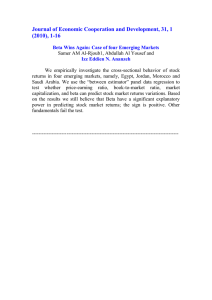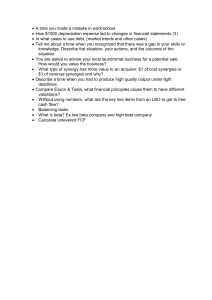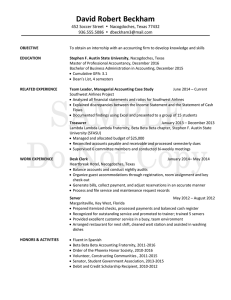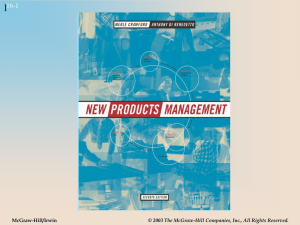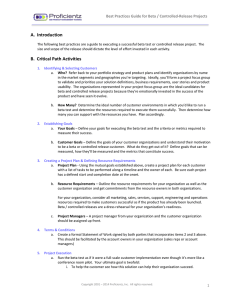General Approach to great ideas
advertisement
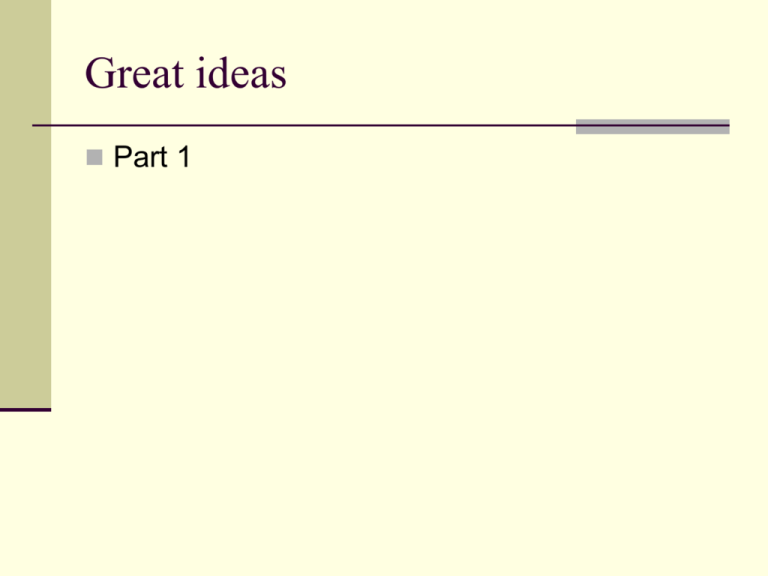
Great ideas Part 1 General Approach to great ideas An idea is a form (such as a thought) formed by consciousness (including mind) through the process of ideation. In a popular sense, an idea arises in a reflex, spontaneous manner, even without thinking or serious reflection , for example, when we talk about the idea of a person or a place No one way is going to work best for all ideas, but here's a general scheme to frame your efforts: Look at your idea. Observe it from different perspectives and angles. Take your idea apart. Use different approaches. Try looking at each part as a separate idea. Add to/remove from your idea. Your idea should be complete, but not overdone Modify/Substitute parts. Find out which works best. Put the parts together. Use different designs and orderings. Combine ideas together. In different ways. Use your idea. Adapt it for a special purpose. Maybe some new ideas will occur to you Machiavelli make much the same point: “There is nothing more difficult to carry out, nor more doubtful of success, nor more dangerous to handle, than to initiate a new order of things. For the reformer has enemies in all who profit by the old order, and only lukewarm defenders in all who profit by the new order. What were the great ideas of the last century? A random list might include abstract art, behaviourism, corporate identity, automation, digital theory, futurism, the uncertainty principle, Gestalt psychology, industrial design, jet engines, fast food, television, the marginal productivity theory of wages, the hit parade, best-sellers, miniskirts, consumerism, modernism, cassette tapes, nudism, VAT, pop and linguistics. These ideas grew in a world with fundamental economic convictions, namely the massproduction and mass-consumption of goods. But these assumptions are fast changing. Those goods are now coming from China and the great legacy manufacturing corporations of the West are mostly in a parlous state. In manufacturing, the rates of change are themselves changing. Anything can be made anywhere; the world is flat. Instead, the ability to generate ideas has replaced manufacturing as the engine of the economy. People with new ideas tend to be both illogical and contradictory. Explaining his discovery of relativity, Einstein said: "I just ignored an axiom." Nothing defines creativity better than the ability to defeat habit by originality. There seems to be a physiological source for new ideas. We have 10 billion brain cells, each one capable of making 5,000 connections, but it is making unusual connections that's a basis for new ideas. But mostly we are very conservative: as far as food is concerned, we eat only about 600 of the planet's hundreds of thousands of edible plants. Cultures which encourage ideas must learn to tolerate error. Mistakes, James Joyce said, are the " portals of discovery". According to IBM's Thomas Watson, "If you want to succeed, double your failure rate." Soichiro Honda believed, "Success represents the one per cent of your work which results from the 99 per cent that is called failure." Henry Ford said, "Failure is the opportunity to begin again more intelligently." Part 2: One good idea for successful business is corporate venturing: It is the process of two companies entering into a partnership Usually a larger company invests money or goods into the smaller company in return for access to technology or skills Corporate venturing is a good solution for companies in crisis (uniting makes them stronger) Another good idea for business is to introduce innovations: It is the introduction of new ideas, goods, services and practices which are intended to be useful The main source of innovation is often the courage and energy to better the world An essential element for innovation is its application in a commercial way A number of innovations have changed human history A great idea is also called a breakthrough: It is usually an important discovery which changes the history of something Very often a single innovative breakthrough is not enough: there has to be continuous improvement For example: the producers of mountain bike have eliminated something form the original model by providing comfort, easy gear changes, a “fun” ride etc. The initial idea for a product is first made as a prototype: It is a model of a future product and every successive product is based on it It is a physical model of the new product concept It includes designs, software and devices It is used for making observations and for some necessary adjustments The final prototype is called the “beta version”: It is a product in its final stage of testing A beta version of a product (beta product) is often available to the public for general use and real life testing. It allows people to start using new tools as soon as possible Here are some ways in which the ideas are generated: Sometimes a company exploits an opportunity to offer more to its customers by extending the product range. Another good idea can allow a company to enter the market which was closed to it before. If a company spends a lot on R&D they might make a breaktrhough with an original idea. On the other hand, some products come from customer ideas. These products meet a real need, they are exactley what the customers demand. A product can also enhance the status, i.e. represent something that makes people feel important. Some people buy a “green” product just to reduce waste and protect the environment
